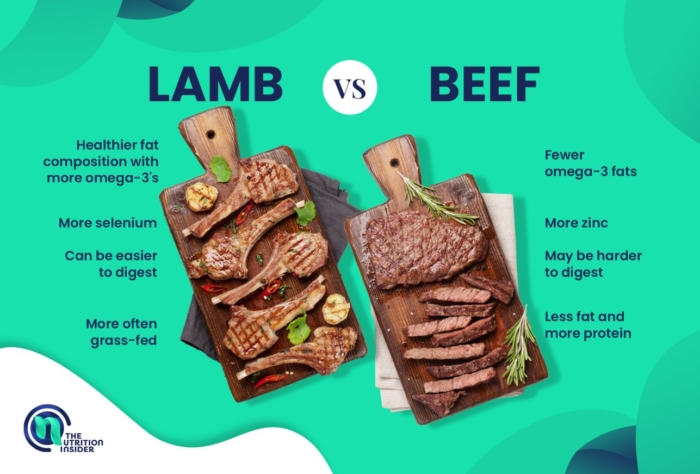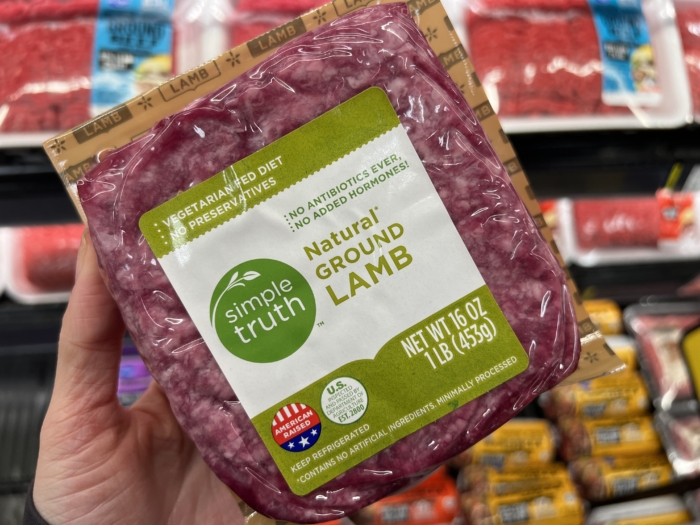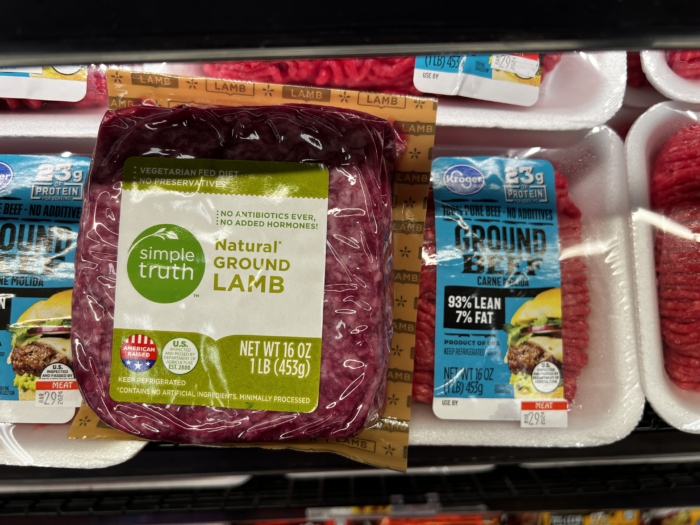Talk to a Registered Dietitian and use INSIDER20 for 20% off!
Talk to a real Dietitian for only $99: Schedule Now
This post contains links through which we may earn a small commission should you make a purchase from a brand. This in no way affects our ability to objectively critique the products and brands we review.
Evidence Based Research To fulfill our commitment to bringing our audience accurate and insightful content, our expert writers and medical reviewers rely on carefully curated research.
Read Our Editorial Policy
While the majority of the American population eats beef on a regular basis, lamb is definitely one of the lesser-consumed red meats.
But with the superior omega-3 fat content and (albeit subjective) better taste of lamb, it seems like many of us are missing out.
Despite the high consumption of lamb in other countries, like Australia, New Zealand, China, and many Mediterranean regions, the average person in the United States eats only three-quarters of a pound of lamb or less per year.
If you’re looking to broaden your culinary and nutritional horizons, consider choosing lamb chops over steaks at your next meal.

Weekly menu, grocery list, macros—one consult unlocks it all.
Weekly menu, grocery list, macros—one consult unlocks it all.


As lamb is not a popular red meat choice in the United States, let’s quickly dive into the basics.
While beef is typically consumed from a cow aged two to five years, lamb is the meat of young sheep under 12 months.
Conversely, mutton is the term used to describe the meat of adult sheep over age three.
For those in-between years when the sheep is 12-36 months old, the meat is an even lesser-known type of red meat called “hogget” or “yearling mutton”.
Lamb is almost always grass-fed—especially when coming from countries like Australia and New Zealand—but some American lamb is grain-finished, which means the animal is fed grain products towards the end of its life to create fattier meat.
As both lamb and beef are types of red meat, they have relatively similar nutritional profiles.
| Lamb (3.5-oz serving of ground lamb) | Beef (3.5-oz serving of 85:15 ground beef) | |
| Calories | 283 | 256 |
| Total Fat | 19.7 grams (g) | 15.3 g |
| Saturated fat | 8.1 g | 5.8 g |
| Monounsaturated fat | 8.3 g | 6.6 g |
| Polyunsaturated fat | 1.4 g | 0.5 g |
| Protein | 25 g | 27.7 g |
| Niacin | 34% of the Daily Value (DV)* | 27% of the DV |
| Zinc | 31% of the DV | 42% of the DV |
| Selenium | 40% of the DV | 31% of the DV |
| Iron | 11-23% of the DV | 11-26% of the DV |
| Vitamin B12 | 43% of the DV | 44% of the DV |
*Daily Value percentages may differ between men and women
It’s important to note that there are dozens of combinations of cuts and fat percentages for both lamb and beef, so these nutritional values can vary widely due to these differences.
These values can also vary depending on whether the animal was grass-fed or grain-fed, as grass-fed beef and lamb will have healthier fat composition, more micronutrients, and antioxidants.
Overall, lamb has slightly more calories and fat compared to beef, with similar quantities of protein, vitamins, and minerals—although lamb contains more selenium and beef boasts more zinc.
Both lamb and beef are similar in that they are a good source of iron, specifically heme iron—the more bioavailable type than the iron found in plants.
However, despite the slight increase in calories and fat, grass-fed lamb has more heart-healthy omega-3 fats than both grain-fed and grass-fed beef.
Despite being slightly lower in protein than beef, lamb is richer in all of the essential amino acids—especially tryptophan, by about three times more than beef.
Plus, both lamb and beef contain the healthy fat conjugated linoleic acid (CLA), which has been linked to weight loss and cardiovascular, metabolic, and cognitive health.
Lamb contains a bit more CLA than beef—one study compared fat content from seven types of meats, finding lamb to have the highest CLA concentrations, at up to 19.9mg per gram of fat, with beef coming in second place, providing up to 10mg per gram of fat.

Many people state that lamb has a distinctive taste, which may arise from the specific types of fat called branched-chain fatty acids that beef does not have.
Grass-fed lamb tastes similar to grass-fed beef, as both provide an earthy and somewhat gamey flavor.
However, lamb will taste vastly different than conventionally raised, grain-fed beef, which has a more mild and fatty flavor.
Plus, lamb is generally tender because it will always come from sheep that are less than one-year-old, whereas beef tends to come from older cows.
Similar to beef, the lamb’s diet can drastically affect how it tastes—although most lambs are grass-fed raised, a lamb that is raised on grains may taste more “beefy” than a fully grass-fed lamb.
Lastly, domestic-raised lamb from the United States is thought to have a milder flavor than imported lamb from New Zealand or Australia.
Lamb and beef have similar calories, total fat, protein, vitamin, and mineral content—but lamb (especially grass-fed lamb) is the winner when it comes to omega-3 fat content.
Grass-fed lamb also has higher quantities of the healthy fat CLA, which is beneficial for cognitive, cardiovascular, and metabolic health.
Although this is a highly subjective question, many people prefer the taste of lamb over beef.
Grass-fed lamb is thought to taste slightly similar to grass-fed beef, but grain-fed beef will be fattier and less gamey than lamb.
However, lamb can be tricky to cook well, as overcooking it will lead to dry or chewy meat.
Grass-fed lamb is considered to be one of the healthiest red meats, although grass-fed beef is close behind.
Both grass-fed lamb and beef contain healthy levels of vitamins, minerals, protein, omega-3 fats, and CLA.
Lamb tends to be easier to digest than beef.
This may be because lamb comes from young sheep under age one, which makes the meat more tender and less protein-rich.
When it comes to nutritional value, which red meat is “better” depends on how the animal was raised.
Grass-fed lamb is more nutritious than conventionally raised, grain-fed beef, as it contains healthier types of fat, more micronutrients and antioxidants, and it is also better for the animal and the environment.
However, grass-fed lamb and grass-fed beef are more similar—although lamb still beats beef when it comes to omega-3 and CLA content.
Overall, lamb has a few advantages over beef—especially grass-fed lamb—including superior fat content, amino acid profile, better taste (to some), and digestibility.
Hopkins DL, Fowler SM. Australian Lamb Meat – The Response to Societal and Ethnic Influences. Korean J Food Sci Anim Resour. 2018;38(4):653-663. doi:10.5851/kosfa.2018.e1
Ponnampalam EN, Butler KL, Jacob RH, et al. Health beneficial long chain omega-3 fatty acid levels in Australian lamb managed under extensive finishing systems. Meat Sci. 2014;96(2 Pt B):1104-1110. doi:10.1016/j.meatsci.2013.04.007
Schmid A, Collomb M, Sieber R, Bee G. Conjugated linoleic acid in meat and meat products: A review. Meat Sci. 2006;73(1):29-41. doi:10.1016/j.meatsci.2005.10.010